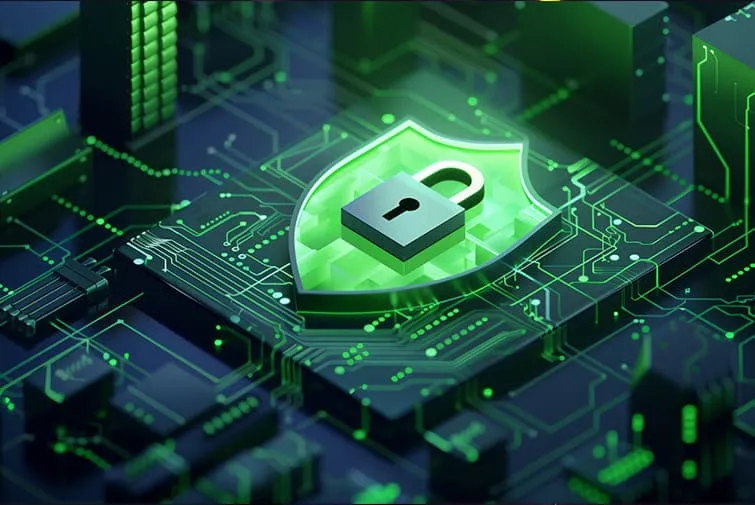Blog
Managed XDR

Trends and Innovations Shaping Managed XDR
The hybrid mode of working has given rise to new and complex cybersecurity challenges. Accessing sensitive data from potentially unsecured devices, servers and networks is increasingly making enterprise data and assets vulnerable to cyber-attacks. In addition, with hackers and cybercriminals continually refining their tactics, the sophistication of their attacks too has increased significantly.
In response to these evolving threats, organizations require advanced cybersecurity solutions. Extended Detection and Response (XDR) technology has emerged as a crucial tool in safeguarding against these sophisticated cyber threats.
In this Blog, we will understand some key aspects of XDR and managed XDR (MXDR) and how Paramount solutions help enterprises pre-empt potential threats and automate threat response.
What is XDR?
Extended Detection and Response (XDR), which lies at the heart of managed XDR, has become a critical component in modern cybersecurity strategies. It provides organizations with proactive defense mechanisms against a wide array of cyber threats.
While there is no single definition of XDR, one of the most widely accepted understandings is that XDR is an extension of traditional EDR (Endpoint Detection and Response) platforms. Broadly, the difference between EDR and XDR is that XDR goes beyond endpoint security and integrates security visibility across endpoints/devices, cloud, and network infrastructure. In addition, XDR offers a unified incident platform that uses AI and automation to protect against more sophisticated cyberattacks.
XDR brings together diverse security products and solutions on a single, cloud-based platform and includes the following components:

- EDR tools:Monitor multiple endpoints that include a range of mobile and IoT devices. EDR tools help to detect, analyze, and respond to suspicious activities that have not been identified by basic antivirus software.
- Automated incident response: XDR solutions incorporate automated incident response mechanisms driven by AI and ML to enable rapid detection and response to security incidents. Predefined rules and policies are established within the XDR system to identify specific patterns and threat indicators and trigger automated responses. When a security incident is detected, the XDR system automatically executes response actions, such as sending alerts to security personnel, isolating compromised endpoints, or blocking malicious network traffic. These automated incident response capabilities help organizations minimize response times and mitigate the impact of security incidents on their infrastructure.
- Analytics: Real-time analysis of endpoint data is a critical component of XDR security. XDR solutions leverage advanced analytics techniques to detect and analyze potential threats. Behavioral analytics, machine learning algorithms, and threat intelligence feeds are utilized to identify patterns, anomalies, and indicators of compromise. Post-incident analysis tools allow security analysts to conduct forensic investigations, gather contextual information, and understand the nature and scope of security incidents.
- Real-time Continuous Monitoring: XDR solutions continuously monitor endpoint activities, processes, network connections, and data transfers in real time. This proactive approach enables the early detection of suspicious behavior and potential security breaches.
- Email, cloud, and data security: XDR solutions offer email security and identity protection capabilities to protect user accounts and communications from unauthorized access, loss, or compromise. In addition, they offer tools for cloud and data security that protect them from internal and external threats.
With most organizations relying heavily on digital platforms for their business-critical data, apps, and workflows, they face a multitude of security threats. Understanding and mitigating these risks is crucial for safeguarding sensitive data and maintaining business continuity. Let’s delve into some of the most prevalent security risks:
Prevalent Security Risks
1. Phishing
Phishing attacks involve the use of deceptive emails, often impersonating trusted entities, to trick recipients into divulging sensitive information, clicking on malicious links, or downloading malware.

2. Ransomware
Ransomware is a type of malicious software designed to encrypt files or lock users out of their systems until a ransom is paid.
3. Device Loss
The loss or theft of devices, such as laptops, mobile phones, or tablets, poses a significant risk to endpoint security.
4. Outdated Patches
Unpatched vulnerabilities in software and operating systems expose endpoints to exploitation by cybercriminals.
5. Unknown Vulnerabilities
Emerging and undiscovered vulnerabilities present ongoing threats to endpoint security.
How Zero Trust Architecture Enhances MXDR
As the name suggests, Zero Trust Architecture (ZTA) is a security model that works on the principle of “never trust, always verify.” This approach to strategy, design, and implementation of IT systems means that users and devices cannot be trusted by default, even if they are connected to a secure network like enterprise LAN.

When combined with managed XDR, ZTA significantly enhances security by reducing workloads for security teams. XDR identifies security gaps swiftly and resolves them without manual intervention, minimizing the need for human effort.
Paramount MXDR360: Comprehensive Security Solution
Managed XDR, also known as MXDR, combines advanced technologies and human intelligence to provide a proactive approach to threat detection and response. With continuous threat hunting, monitoring, and incident response, MXDR helps enterprises stay ahead of cyber attackers.
Key Features of MXDR360
- CASB, CSPM, CWPP: Cloud security services including Cloud Access Security Brokers, Cloud Security Posture Management, and Cloud Workload Protection Platforms.
- Email Authentication: Services like SPF, DKIM, and DMARC to safeguard email communications.
- Built-in SOAR and UEBA: Security Orchestration and Automated Response, along with User Entity Behavior Analysis, streamline detection and response.

Benefits of MXDR360
- 24×7 Monitoring and Threat Hunting
- Real-Time Incident Response with minimal infrastructure burden
- Pay-as-you-go Pricing with no upfront costs
- Threat Intelligence and Forensic Investigation Capabilities
Conclusion
As organizations navigate an increasingly complex threat landscape, managed XDR services offer a proactive approach to enterprise security. By leveraging advanced technologies and innovative approaches, such as those offered by Paramount MXDR360, businesses can strengthen their security posture and mitigate evolving threats.

Protect your online assets from cyber threats with Paramount

Comprehensive cyber security solutions for individuals and businesses

Significantly reduce the risk of cyber threats and ensure a safer digital environment.
